Install the app
How to install the app on iOS
Follow along with the video below to see how to install our site as a web app on your home screen.
Note: This feature may not be available in some browsers.
You are using an out of date browser. It may not display this or other websites correctly.
You should upgrade or use an alternative browser.
You should upgrade or use an alternative browser.
UT UT - Everett Ruess, 20, Escalante Canyons, Nov 1934
- Thread starter Richard
- Start date
TinfoilYarmulke
Active Member
- Joined
- Dec 17, 2014
- Messages
- 70
- Reaction score
- 150
Was Everett ever added to NamUs? I see someone back in 2018 said they added him, but I don't see him listed.
Mysteries1974
Martha Jean Lambert - Missing since 1985
- Joined
- Apr 6, 2018
- Messages
- 2,359
- Reaction score
- 4,939
I submitted him. I guess they are still working on getting him upWas Everett ever added to NamUs? I see someone back in 2018 said they added him, but I don't see him listed.
TinfoilYarmulke
Active Member
- Joined
- Dec 17, 2014
- Messages
- 70
- Reaction score
- 150
Hmm interesting. I wonder since someone have his DNA profile already if they could submit it to GEDmatch or work with the DNA Doe Project to identify him.
Enhanced image from source http://extras.mnginteractive.com/live/media/site21/2009/1021/20091021__22dcapoew.jpg
Attachments
Rigor_Mortis_Tortis
Member
- Joined
- Oct 11, 2021
- Messages
- 26
- Reaction score
- 33
TinfoilYarmulke
Active Member
- Joined
- Dec 17, 2014
- Messages
- 70
- Reaction score
- 150
NamUs - MP53417
YAY! Finally.
ChatteringBirds
Well-Known Member
- Joined
- Oct 5, 2019
- Messages
- 9,539
- Reaction score
- 46,862
I saw his case on NamUs today too; it's a very interesting one.
Text/Photos copied from: The National Missing and Unidentified Persons System (NamUs)
On November 20, 1934, Everett Ruess set out alone into the Utah desert, taking two donkeys as pack animals. He was never seen again. Earlier in 1934, Ruess had told his parents he would be unreachable for nearly two months, but about three months after his last correspondence, they started receiving their son’s uncalled-for mail. They wrote a letter to the post office of Escalante, Utah, on February 7, 1935. A commissioner of Garfield County saw the letter and decided to form a search party with other men in the area. Ruess’ donkeys were found near the north side of Davis Gulch, a canyon of the Escalante River. The only sign of Ruess himself was a corral he had made at his campsite in Davis Gulch, as well as an inscription the search party
found nearby, with the words “NEMO Nov 1934”. The commissioner reported the discovery of the donkeys and the inscription to Ruess’ parents in a letter dated March 8, 1935.
On March 15, after completing a last attempt to find Ruess in the Kaiparowits Plateau, Allen wrote a final note to the family calling an end to the search efforts. Later searches in late May and June 1935 included an aerial survey of the land from an altitude of 12,000 feet (3,700 m), covering the ground from Lee’s Ferry to Escalante. On the ground, a party of nine horseback riders joined the search, but discontinued their effort a week later. Some believe Ruess may have fallen off a cliff or drowned in a flash flood; others suspected he had been murdered.
Accessories: He may have been wearing a Navajo bracelet with three turquoise stones. His bedroll, food, journal, paintings, cooking kit, and money were missing. wears a size 9 shoe.




Text/Photos copied from: The National Missing and Unidentified Persons System (NamUs)
On November 20, 1934, Everett Ruess set out alone into the Utah desert, taking two donkeys as pack animals. He was never seen again. Earlier in 1934, Ruess had told his parents he would be unreachable for nearly two months, but about three months after his last correspondence, they started receiving their son’s uncalled-for mail. They wrote a letter to the post office of Escalante, Utah, on February 7, 1935. A commissioner of Garfield County saw the letter and decided to form a search party with other men in the area. Ruess’ donkeys were found near the north side of Davis Gulch, a canyon of the Escalante River. The only sign of Ruess himself was a corral he had made at his campsite in Davis Gulch, as well as an inscription the search party
found nearby, with the words “NEMO Nov 1934”. The commissioner reported the discovery of the donkeys and the inscription to Ruess’ parents in a letter dated March 8, 1935.
On March 15, after completing a last attempt to find Ruess in the Kaiparowits Plateau, Allen wrote a final note to the family calling an end to the search efforts. Later searches in late May and June 1935 included an aerial survey of the land from an altitude of 12,000 feet (3,700 m), covering the ground from Lee’s Ferry to Escalante. On the ground, a party of nine horseback riders joined the search, but discontinued their effort a week later. Some believe Ruess may have fallen off a cliff or drowned in a flash flood; others suspected he had been murdered.
Accessories: He may have been wearing a Navajo bracelet with three turquoise stones. His bedroll, food, journal, paintings, cooking kit, and money were missing. wears a size 9 shoe.




Boredathome
Member
- Joined
- May 18, 2022
- Messages
- 36
- Reaction score
- 62
Submitted this UID to the Doe Project this morning. Once they add him, he seems like an intriguing possible match for Ruess. The National Missing and Unidentified Persons System (NamUs)
cenazoic
Mostly pre-1960s MPs
- Joined
- Jan 28, 2015
- Messages
- 616
- Reaction score
- 2,955
One of the people behind the original DNA tests, David Roberts, wrote about the DNA (and Everett’s life, as much as we can know) in Finding Everett Ruess. He also discusses the theory/rumor that the murderer(s) were Mormons from Escalante.
Another good book which discusses his disappearance and comes to somewhat different conclusions is The Disappearances, by Scott Thybony. This looks at 3 different missing persons cases from the 1930s in the American southwest.
Another good book which discusses his disappearance and comes to somewhat different conclusions is The Disappearances, by Scott Thybony. This looks at 3 different missing persons cases from the 1930s in the American southwest.
cenazoic
Mostly pre-1960s MPs
- Joined
- Jan 28, 2015
- Messages
- 616
- Reaction score
- 2,955
I spent more than half my life studying the Everett Reuss case (Utah), and still can't believe that one was solved. Went up there, tried to follow his route and look around, I was immediately overwhelmed on every possible level. But he was found.
(Sorry for the sidetrack feom a different thread!)
What?? Do you have a link?
Or are you referring to the 2007 DNA tests, initially reported as a match for ER? If so, that story was retracted in 2011. (Both the original test and the correction are discussed in David Roberts’ book, Finding Everett Ruess.)
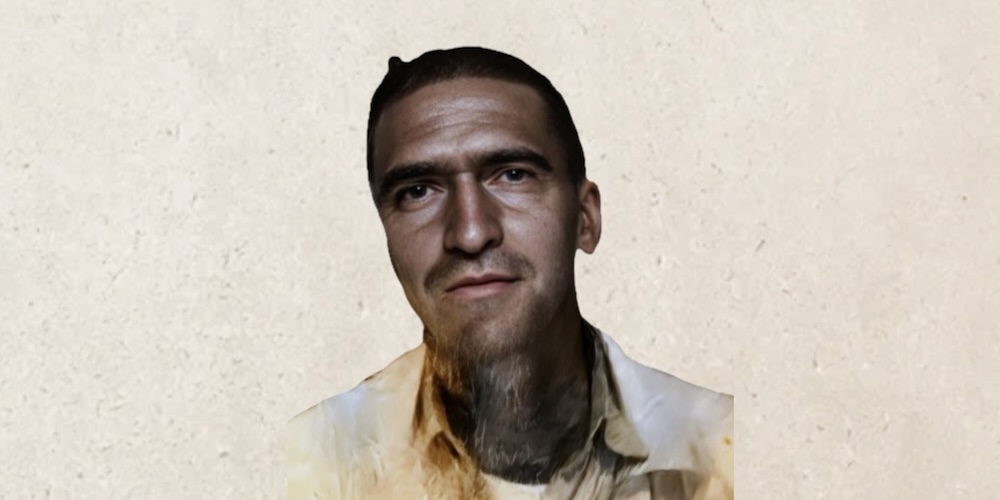
After 65 years, Millard County John Doe is Identified
Millard County Sheriff's Office Teams with Othram to Identify 1958 John Doe
The anthropological assessment determined that the decedent experienced skeletal trauma during his life. While estimates of an individual’s lifestyle and occupation are not routinely estimated when examining skeletal remains, the extent of healed injuries that were sustained during the man’s life indicate that he may have been a working cowboy or rodeo athlete. Additionally, the man may have had a condition in which the knees tilt inward while the ankles remain spaced apart, commonly referred to as “knock-kneed.”
It is speculated that these remains could be that of Everett Ruess, an American artist, poet, and writer who was known to be exploring the Utah deserts in the 1930s when he went missing. However, with the passing of decades and the lack of identifying characteristics or other information, the identity of the man is unknown. In 2020, details of the case were entered into the National Missing and Unidentified Persons System (NamUs) as #UP64653.
In 2023, the Millard County Sheriff’s Office teamed with Othram to determine if advanced DNA testing could help to finally identify the remains of the John Doe. Anyone who may assist in the investigation is encouraged to contact the Millard County Sheriff’s Office and reference agency case number 197900337 or NamUs ID #UP64653.''
- BOB SILBERNAGEL Mar 5, 2023
- Eccentric artist-adventurer remains missing in Utah desert after 88 years
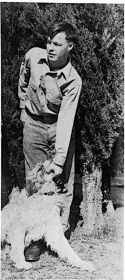
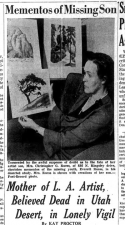
- Everett Ruess and his trail companion, Curly, as they appeared in 1932 from The Desert Magazine, September 1938. (Magazine is now defunct).
- ''Ruess was a 20-year-old artist, poet and writer from Los Angeles who had four years of solo back-country experience under his belt when he disappeared in November of 1934. He was last seen southeast of Escalante, Utah, on the road to the Hole in the Rock and the Colorado River.
However, because he wrote to his family in Los Angeles that he didn’t expect to be near a Post Office for two months, his parents didn’t begin to worry about him until late January. Then they began contacting everyone who might have seen or heard of Everett during his brief stay in Escalante.
Their calls and letters unleashed a flurry of efforts to try to find the young man — some sincere and some clearly designed to garner money from Ruess’ parents or publicity for the searchers.
Almost immediately, quotes from some of Ruess’ writings and information about his art began to accompany stories of his disappearance.
On March 12, 1935, a Salt Lake City newspaper printed Ruess’ last known letter, to his brother Waldo. In it, he said he did not expect to return to civilization soon.
“I have not tired of the wilderness, rather I enjoy its beauty and the vagrant life I lead,” he wrote. “I prefer the saddle to the streetcar and the star sprinkled sky to a roof … the deep peace of the wild to the discontent bred by cities.”
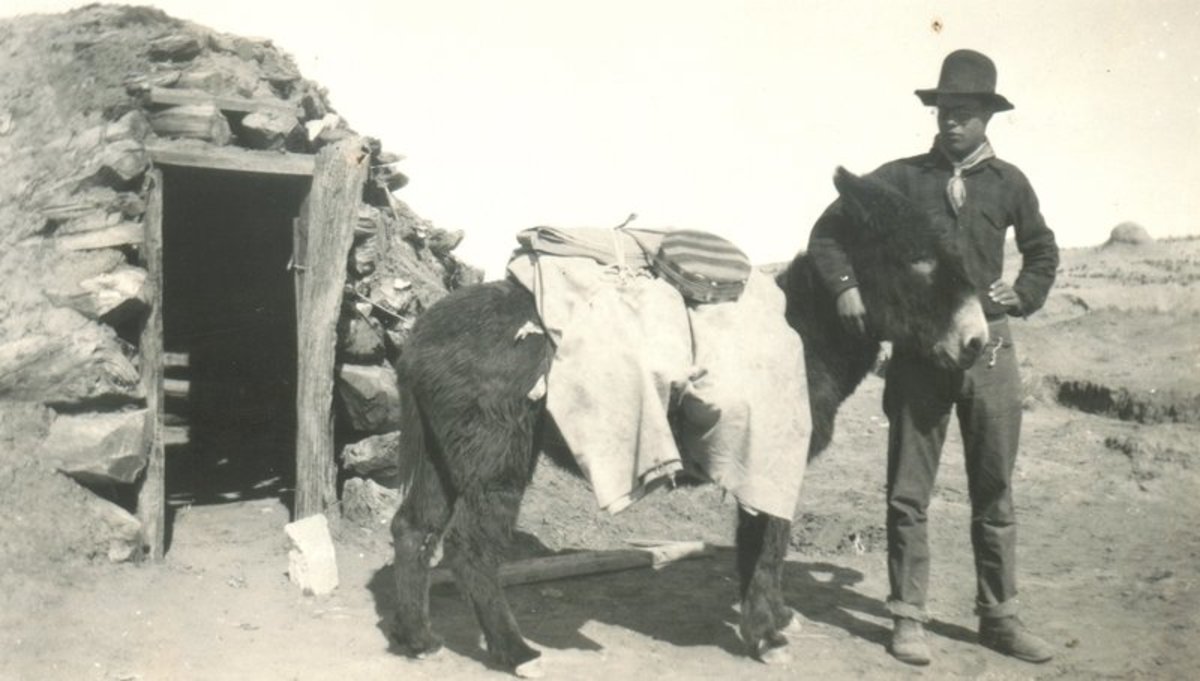
Everett Ruess and his Donkey, 1934
LINK:
imstilla.grandma
Believer of Miracles
- Joined
- Jul 7, 2018
- Messages
- 30,699
- Reaction score
- 208,651
“It was determined that the skeletal remains are likely that of a white male, estimated to be between 5’8” and 6’2” tall, who at the time of his death was between 25 and 35 years old. The anthropological assessment determined that the decedent experienced skeletal trauma during his life.
“While estimates of an individual’s lifestyle and occupation are not routinely estimated when examining skeletal remains, the extent of healed injuries that were sustained during the man’s life indicate that he may have been a working cowboy or rodeo athlete.”
He may also have been knock-kneed.
It is speculated that these remains could be that of Everett Ruess, an American artist, poet and writer who was known to be exploring the Utah deserts in the 1930s when he went missing.
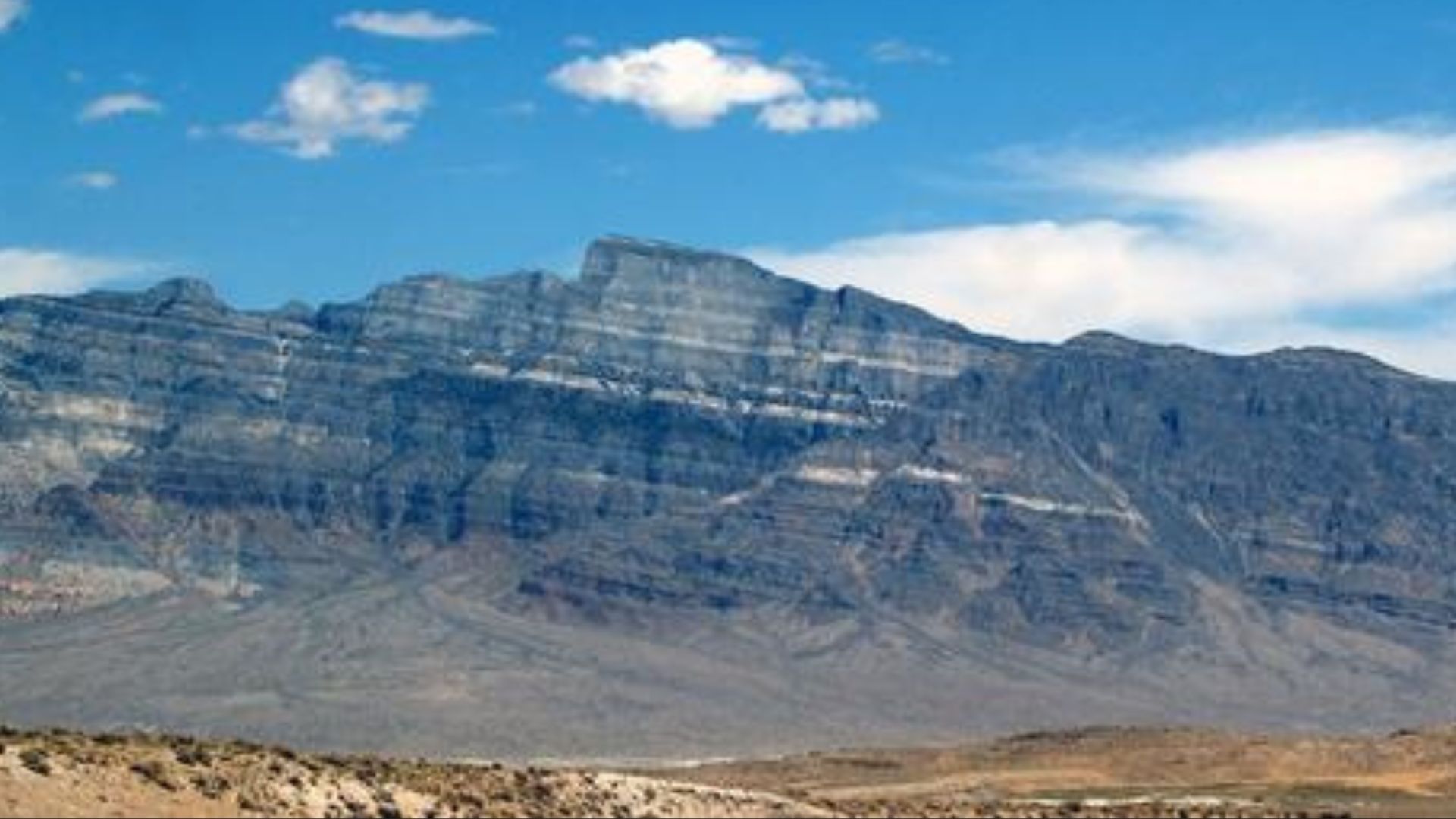
 gephardtdaily.com
gephardtdaily.com
“While estimates of an individual’s lifestyle and occupation are not routinely estimated when examining skeletal remains, the extent of healed injuries that were sustained during the man’s life indicate that he may have been a working cowboy or rodeo athlete.”
He may also have been knock-kneed.
It is speculated that these remains could be that of Everett Ruess, an American artist, poet and writer who was known to be exploring the Utah deserts in the 1930s when he went missing.

Millard County sheriff hoping to solve 65-year-old case of human remains | Gephardt Daily
The Millard County Sheriff's Office is stepping up efforts to identify human remains found in 1958.
 gephardtdaily.com
gephardtdaily.com
imstilla.grandma
Believer of Miracles
- Joined
- Jul 7, 2018
- Messages
- 30,699
- Reaction score
- 208,651
Photo Archives | University of Utah Marriott Library | J. Willard Marriott Digital Library
Everett Ruess family papers - Archives West
Archives West provides access to descriptions of primary sources in the western United States, including correspondence, diaries, and photographs. Digital reproductions of primary sources are available in some cases. Archives West was formerly known as the Northwest Digital Archives (NWDA).
archiveswest.orbiscascade.org
Dorothea Lange - OMCA Untitled (Portrait of Everett Ruess)
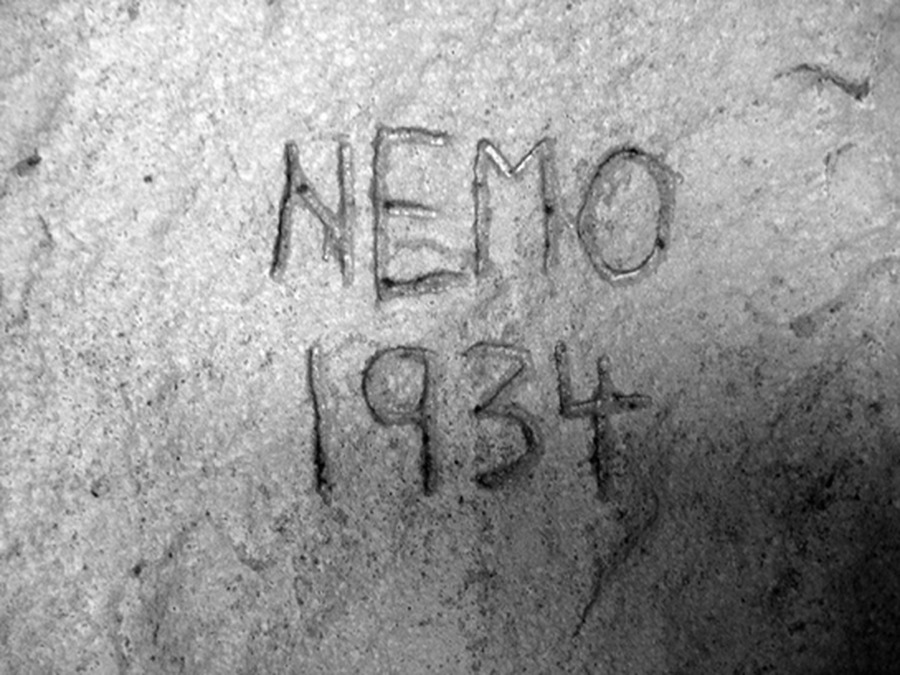
Episode 31: The Tale of Everett Ruess : This is the Colorado Plateau : Free Download, Borrow, and Streaming : Internet Archive
On this episode of our radio hour we explore the short but full life of Everett Ruess, an artist and wanderer who disappeared in the heart of the Grand...
archive.org
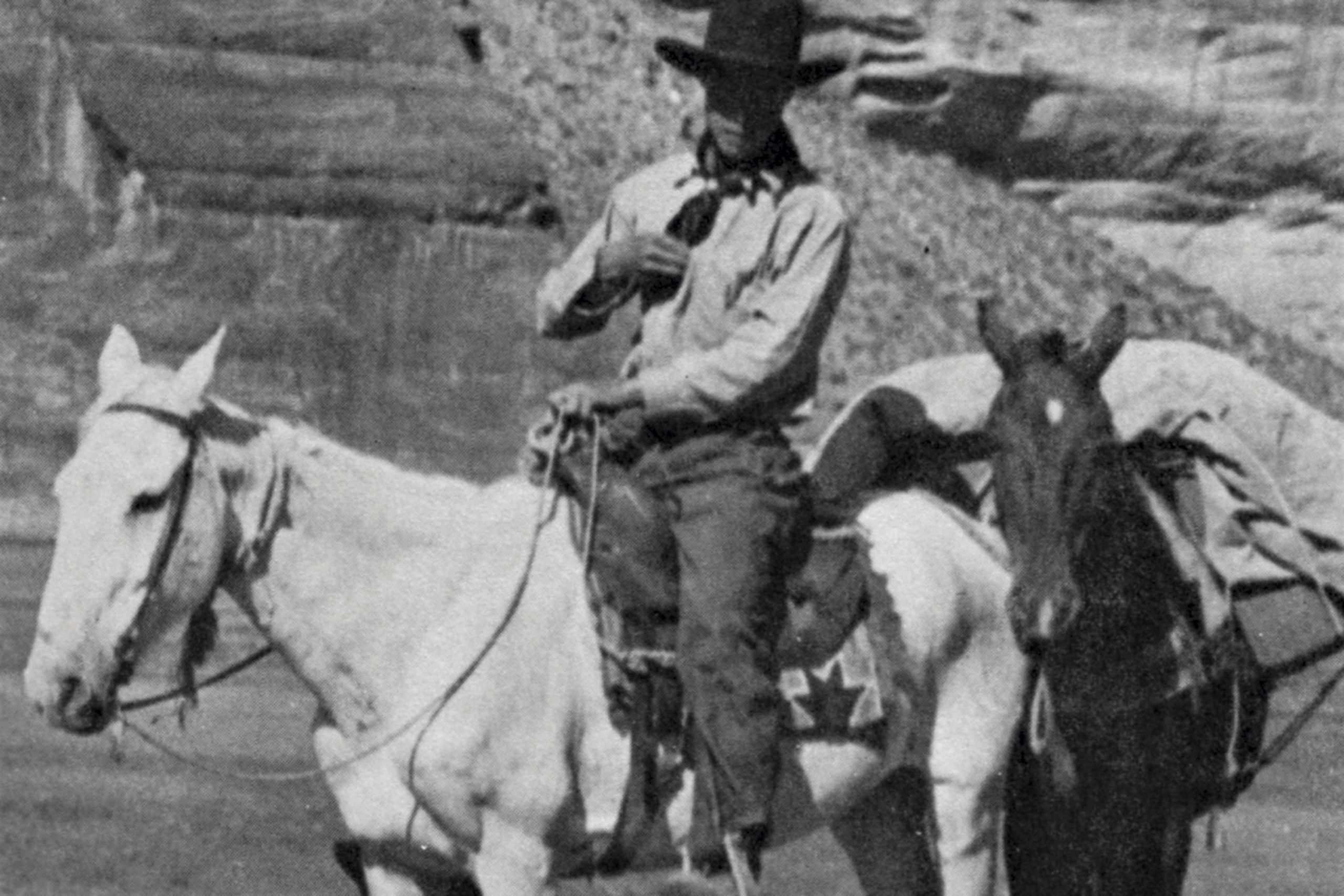
History: Into the Wild
For more than 50 years, PHOENIX magazine's experienced writers, editors, and designers have captured all sides of the Valley with award-winning and insightful writing, and groundbreaking reporting and design.
HmmMysterious
Well-Known Member
- Joined
- Dec 30, 2021
- Messages
- 1,315
- Reaction score
- 6,632
This John Doe has been identified as Robert Holman Trent. I guess we'll have to keep looking for Everett“It was determined that the skeletal remains are likely that of a white male, estimated to be between 5’8” and 6’2” tall, who at the time of his death was between 25 and 35 years old. The anthropological assessment determined that the decedent experienced skeletal trauma during his life.
“While estimates of an individual’s lifestyle and occupation are not routinely estimated when examining skeletal remains, the extent of healed injuries that were sustained during the man’s life indicate that he may have been a working cowboy or rodeo athlete.”
He may also have been knock-kneed.
It is speculated that these remains could be that of Everett Ruess, an American artist, poet and writer who was known to be exploring the Utah deserts in the 1930s when he went missing.

Millard County sheriff hoping to solve 65-year-old case of human remains | Gephardt Daily
The Millard County Sheriff's Office is stepping up efforts to identify human remains found in 1958.gephardtdaily.com
DNASolves
Online statistics
- Members online
- 61
- Guests online
- 4,202
- Total visitors
- 4,263
Totals may include hidden visitors.

